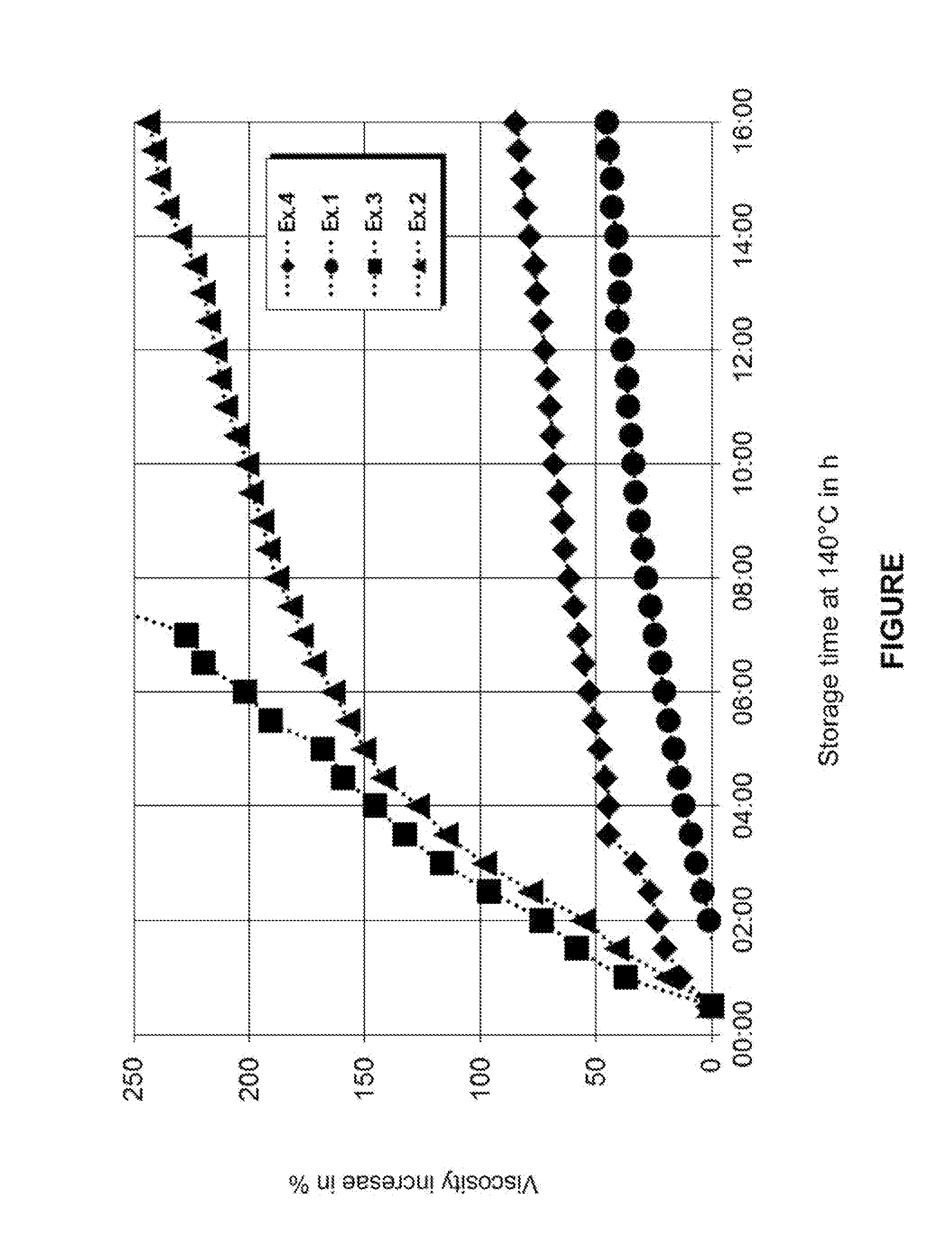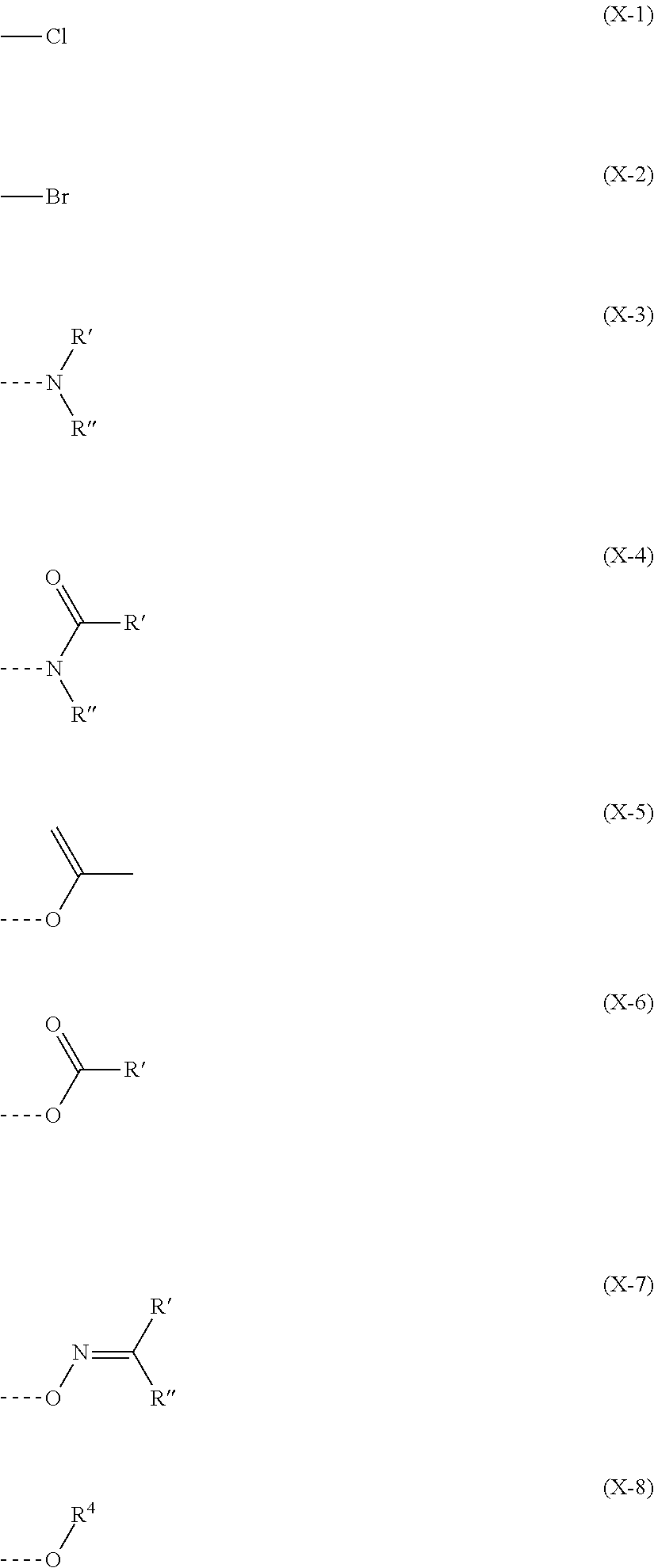Polyurethane hot-melt adhesive having a low content of diisocyanate monomers and good cross-linking speed
a technology of polyisocyanate monomers and hot-melt adhesives, which is applied in the direction of adhesives, adhesive types, adhesive processes, etc., can solve the problems of poor working stability and some poor storage stability on open application lines, and achieve good cross-linking density and through-cure rate , high level of safe working
- Summary
- Abstract
- Description
- Claims
- Application Information
AI Technical Summary
Benefits of technology
Problems solved by technology
Method used
Image
Examples
example 2b (comparative)
[0147]A prepolymer was prepared with the quantities reported in table 1, in the manner described in example 1, and the amount of Desmodur VP LS 2397 listed in table 1 was mixed homogeneously at a temperature of 120° C. for 30 minutes. The reaction product formed was kept at room temperature in the absence of moisture.
examples 3 and 3b (comparative)
[0148]A prepolymer was prepared with the quantities reported in table 1, in the manner described in example 1, and the amounts of SilquesteA-189 listed in table 1 were mixed homogeneously at a temperature of 120° C. for 1 hour. The reaction product formed was kept at room temperature in the absence of moisture.
examples 4 to 8
Examples 5 and 8 are Comparative Examples
[0149]A prepolymer was prepared with the quantities reported in table 1, in the manner described in example 1, and the amounts of Desmodur VP LS 2397 listed in table 1 were mixed homogeneously at a temperature of 120° C. for 30 minutes.
[0150]Thereafter the amount of Silquest®A-189 listed in table 1 was mixed homogeneously for 1 hour with the temperature maintained. The reaction product formed was kept at room temperature in the absence of moisture.
TABLE 1*(amounts in wt %)Example122b33b45678FormulaDurez Ter52.1%32.6%45.6%51.3% 52%44.6%43.7% 45%28.1%48.3%S1151-22Dynacoll 725034.7%21.7%30.4%34.2%34.7%29.7% 29% 30%18.8%32.2%Desmodur VP LS—45.7% 14%—— 14%13.7%14.1% 45% 7%2397Silquest A-189——— 3.3% 1.9% 1.9% 4% 1% 1.9% 1.9%MDI13.2%— 10%11.2%11.4% 9.8% 9.6% 9.9% 6.2%10.6%Results ofmeasurementResidual2.3% 1.1%0.57% 1.1%0.46%0.49%0.80%0.46%0.88%monomerThrough-curing1933214235325122322255% rel. humidity[hours]Heat stability>200° C.140° C.13...
PUM
| Property | Measurement | Unit |
|---|---|---|
| temperature | aaaaa | aaaaa |
| temperature | aaaaa | aaaaa |
| temperature | aaaaa | aaaaa |
Abstract
Description
Claims
Application Information
 Login to View More
Login to View More - R&D
- Intellectual Property
- Life Sciences
- Materials
- Tech Scout
- Unparalleled Data Quality
- Higher Quality Content
- 60% Fewer Hallucinations
Browse by: Latest US Patents, China's latest patents, Technical Efficacy Thesaurus, Application Domain, Technology Topic, Popular Technical Reports.
© 2025 PatSnap. All rights reserved.Legal|Privacy policy|Modern Slavery Act Transparency Statement|Sitemap|About US| Contact US: help@patsnap.com


